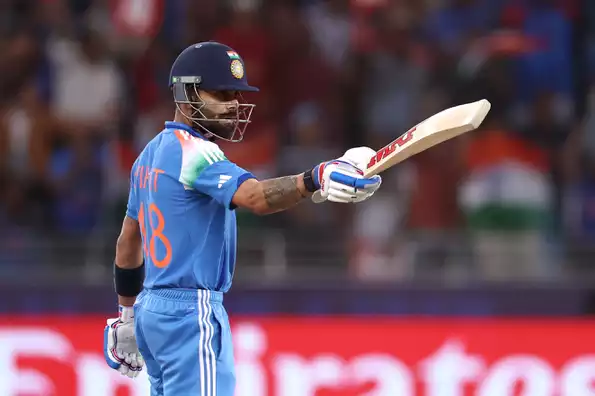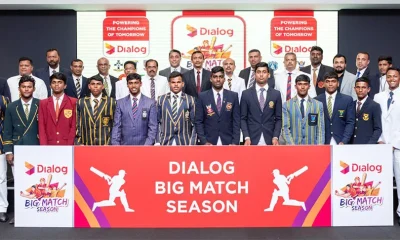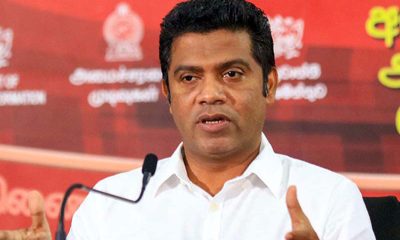Latest News
Manmohan Singh, Indian ex-PM and architect of economic reform, dies at 92

Former Indian prime minister Manmohan Singh has died at the age of 92.
Singh was one of India’s longest-serving prime ministers and he was considered the architect of key liberalising economic reforms, as premier from 2004-2014 and before that as finance minister.
He had been admitted to a hospital in the capital Delhi after his health condition deteriorated, reports say.
Among those who paid tribute to Singh on Thursday were Prime Minister Narendra Modi, who wrote on social media that “India mourns the loss of one of its most distinguished leaders”.
Modi said that Singh’s “wisdom and humility were always visible” during their interactions and that he had “made extensive efforts to improve people’s lives” during his time as prime minister.
Priyanka Gandhi, the daughter of former prime minister Rajiv Gandhi and a Congress party member, said that Singh was “genuinely egalitarian, wise, strong-willed and courageous until the end”.
Her brother Rahul, who leads Congress, said he had “lost a mentor and guide”.
Singh was the first Indian leader since Jawaharlal Nehru to be re-elected after serving a full first term, and the first Sikh to hold the country’s top post. He made a public apology in parliament for the 1984 riots in which some 3,000 Sikhs were killed.
But his second term in office was marred by a string of corruption allegations that dogged his administration. The scandals, many say, were partially responsible for his Congress party’s crushing defeat in the 2014 general election.
Singh was born on 26 September 1932, in a desolate village in the Punjab province of undivided India, which lacked both water and electricity.
After attending Panjab University he took a master’s degree at the University of Cambridge and then a DPhil at Oxford.
While studying at Cambridge, the lack of funds bothered Singh, his daughter, Daman Singh, wrote in a book on her parents.
“His tuition and living expenses came to about £600 a year. The Panjab University scholarship gave him about £160. For the rest he had to depend on his father. Manmohan was careful to live very stingily. Subsidised meals in the dining hall were relatively cheap at two shillings sixpence.”
Daman Singh remembered her father as “completely helpless about the house and could neither boil an egg, nor switch on the television”.
His unexpected appointment capped a long and illustrious career as an academic and civil servant – he served as an economic adviser to the government, and became the governor of India’s central bank.
In his maiden speech as finance minister he famously quoted Victor Hugo, saying that “no power on Earth can stop an idea whose time has come”.
That served as a launchpad for an ambitious and unprecedented economic reform programme: he cut taxes, devalued the rupee, privatised state-run companies and encouraged foreign investment.
The economy revived, industry picked up, inflation was checked and growth rates remained consistently high in the 1990s.

Manmohan Singh was a man acutely aware of his lack of a political base. “It is nice to be a statesman, but in order to be a statesman in a democracy you first have to win elections,” he once said.
When he tried to win election to India’s lower house in 1999, he was defeated. He sat instead in the upper house, chosen by his own Congress party.
The same happened in 2004, when Singh was first appointed prime minister after Congress president Sonia Gandhi turned down the post – apparently to protect the party from damaging attacks over her Italian origins. Critics however alleged that Sonia Gandhi was the real source of power while he was prime minister, and that he was never truly in charge.

The biggest triumph during his first five-year term was to bring India out of nuclear isolation by signing a landmark deal securing access to American nuclear technology.
But the deal came at a price – the government’s Communist allies withdrew support after protesting against it, and Congress had to make up lost numbers by enlisting the support of another party amid charges of vote-buying.
A consensus builder, Singh presided over a coalition of sometimes difficult, assertive and potentially unruly regional coalition allies and supporters.
Although he earned respect for his integrity and intelligence, he also had a reputation for being soft and indecisive. Some critics claimed that the pace of reform slowed and he failed to achieve the same momentum he had while finance minister.

When Singh guided Congress to a second, decisive election victory in 2009, he vowed that the party would “rise to the occasion”.
But the gloss soon began to wear off and his second term was in the news mostly for all the wrong reasons: several scandals involving his cabinet ministers which allegedly cost the country billions of dollars, a parliament stalled by the opposition, and a huge policy paralysis that resulted in a serious economic downturn.
LK Advani, a senior leader in the rival BJP party, called Singh India’s “weakest prime minister”.
Manmohan Singh defended his record, saying his government had worked with “utmost commitment and dedication for the country and the welfare of its people”.
Singh adopted the pragmatic foreign policies pursued by his two predecessors.
He continued the peace process with Pakistan – though this process was hampered by attacks blamed on Pakistani militants, culminating in the Mumbai gun and bomb attack of November 2008.
He tried to end the border dispute with China, brokering a deal to reopen the Nathu La pass into Tibet which had been closed for more than 40 years.
Singh increased financial support for Afghanistan and became the first Indian leader to visit the country for nearly 30 years.
He also angered many opposition politicians by appearing to end relations with India’s old ally, Iran.
A studious former academic and bureaucrat, he was known for being self-effacing and always kept a low profile. His social media account was noted mostly for dull entries and had a limited number of followers.
A man of few words, his calm demeanour nevertheless won him many admirers.
Responding to questions on a coal scandal involving the illegal allocation of licences worth billions of dollars, he defended his silence on the issue by saying it was “better than thousands of answers”.

In 2015 he was summoned to appear in court to answer allegations of criminal conspiracy, breach of trust and corruption related offences. An upset Singh told reporters that he was “open for legal scrutiny” and that the “truth will prevail”.
After his time as premier, Singh remained deeply engaged with the issues of the day as a senior leader of the main opposition Congress party despite his advancing age.
In August 2020, he told the BBC in a rare interview that India needed to take three steps “immediately” to stem the economic damage of the coronavirus pandemic, which had sent the country’s economy into a recession.
The government needed to provide direct cash assistance to people, make capital available for businesses, and fix the financial sector, he said.
History will remember Singh for bringing India out of economic and nuclear isolation, although some historians may suggest he should have retired earlier.
“I honestly believe that history will be kinder to me than the contemporary media, or for that matter, the opposition parties in parliament,” he told an interviewer in 2014.
Singh is survived by his wife and three daughters.
[BBC]
Latest News
South Africa, New Zealand gear up for run-fest as even contest beckons

South Africa and New Zealand, the two best sides to have never won a World Cup, meet in a knockout match. Both have had their hands on this trophy all the way back when it was called the ICC Knockout and possibly meant something else in terms of its significance in the global game. So make no mistake: winning this will not take away the desire for the big one but it will help to tide things over until 2027, when South Africa co-host the event with neighbours Zimbabwe and Namibia.
Quietly, South Africa know they are actually building for that but the pressure to return home with something other than disappointment is ever-present. This is another chance to change that. New Zealand, after coming so close to the trophy at the 2019 World Cup, also carry scars but somehow seem less burdened by them. Perhaps a smaller population, with fewer socio-economic fractures that can be plastered over with sporting success helps them; maybe they’re just good at stoicism. Those are things to ponder later in the week when one of these two teams will play a final against a yet-to-be-decided opposition at a yet-to-be-decided venue. For now, they’ve both probably got the knockout they wanted.
Facing each other, rather than India or Australia, appears to give them both a better chance of progressing to the final. And doing it in Pakistan, though both teams travelled from Dubai at different times on Monday, likely suits them more. Conditions are good for run-scoring and both have line-ups capable of posting big scores which suggests fans will be in for a run-fest. Their attacks are similarly matched to the point where both were hit by injury-enforced absences amongst the quicks. Some of the more interesting narratives could be around which of the tall men – Marco Jansen and Kyle Jamieson – can extract the most with their height or which of the attacking bowlers, Kagiso Rabada or Matt Henry, has the most success.
A difference could come in the spin resources, where South Africa have chosen to operate with only one specialist in Keshav Maharaj but New Zealand have both captain Mitchell Santner and offspinner Michael Bracewell in their best XI. Maharaj had previously indicated he sees a spinners role as a more defensive one at this event so their economy rates are the numbers to watch here.
Overall, this match promises an even contest without the hype that comes with playing a big three nation even though there is plenty of history. New Zealand dumped South Africa out of both the 2011 and 2015 World Cups and though the likes of us will talk about it, it’s worth remembering that the last of those was ten years ago and much cricket has been played since.
Then, particularly for South Africa, the results seemed seismic. Now, ICC events happen annually and teams are dusting themselves off and starting again with much greater frequency. Does that mean it matters less if you lose at a crucial stage or even if you win? Ask one of these two, who have both spent the best part of the last three decades trying to win a major trophy and they’re likely to say no. Only one of them will have the chance to do it this time.
No one has quite said it yet but could this be the last time 35-year-old David Miller plays in an ODI tournament for South Africa? And if so, what kind of say will he have on it? He has limited opportunity in the tournament so far. He came to bat in the 43rd over against Afghanistan only to smash the winning runs against England, but has had almost-decisive knocks in both South Africa’s previous white-ball knockout games. At the 2023 ODI World Cup, Miller’s century gave South Africa something to defend in the semi-final after they were reduced to 24 for 4; at the 2024 T20 World Cup, he was looking good on 21 off 17 balls before being spectacularly caught on the boundary which could have taken South Africa within touching distance of the trophy. Miller has shown he enjoys the big occasion and has also indicated he is taking things year by year, so chances to play in knockouts are likely becoming fewer. After all his efforts, he will want to play a role in South Africa winning one
Kane Williamson has back-to-back ODI centuries against South Africa, albeit they were scored six years apart. He made 106* against them in Birmingham in June 2019 and 133* against them at this venue in the tri-series that preceded this tournament, though that was not against a full-strength South African side. Overall, Williamson averages 57.35 against South Africa, his best against any opposition other than Zimbabwe. Though New Zealand have a line-up of creative and crafty hitters, Williamson’s role in New Zealand’s side continues to be of utmost importance as evidenced by his 81 against India in Dubai, where he kept New Zealand in the fight in what was ultimately a losing cause.
Like many of the more experienced players at this event, at 34, Williamson may not get another opportunity to win an ODI trophy and will want to make the most of this one.
Openers Temba Bavuma and Tony de Zorzi have both recovered from the illness that kept them out of the England game and are expected to be available for selection, but de Zorzi is expected to make way for Aiden Markram, who passed his fitness test on Tuesday. George Linde has been called up as a travelling reserve. The bowling make-up – two allrounders, one specialist spinner and two quicks – is expected to be unchanged.
New Zealand’s only question will be which one of Will Young, Rachin Ravindra, Devon Conway or Daryl Mitchell they will leave out. Conway sat out the India match for Mitchell, who played against Pakistan but not Bangladesh. Young and Ravindra both have centuries to their names at this competition which suggests the decision is between Mitchell and Conway, who has scores of 30 and 10 from his outings in the tournament.
South Africa (possible): Temba Bavuma (capt), Ryan Rickelton, Rassie van der Dussen, Aiden Markram, Heinrich Klaasen (wk), David Miller, Wiaan Mulder, Marco Jansen, Keshav Maharaj, Kagiso Rabada, Lungi Ngidi
New Zealand: Will Young, Rachin Ravindra/Devon Conway, Kane Williamson, Daryl Mitchell, Tom Latham (wk), Glenn Phillips, Michael Bracewell, Mitchell Santner (capt), Matt Henry, Kyle Jamieson, Will O’Rourke
[Cricinfo]
Foreign News
Arab leaders approve $53bn alternative to Trump’s Gaza plan

A $53bn (£41.4 billion) reconstruction plan to rival President Donald Trump’s idea for the US to “take over Gaza” and move out more than two million Palestinians has been approved by Arab leaders at an emergency summit in the Egyptian capital Cairo.
“The Egypt plan is now an Arab plan,” announced the secretary general of the Arab League Ahmed Aboul Gheit at the end of this hours-long gathering.
Without referring specifically to President Trump’s ideas, he underlined that “the Arab stance is to reject any displacement, whether it is voluntary or forced”.
Egypt had produced a detailed blueprint, with a 91-page glossy document including images of leafy neighbourhoods and grand public buildings, to counter a US scheme labelled as a “Middle East Riviera” which shocked the Arab world and beyond.
What sets this new plan apart is it is not just about property development; its banners are politics and the rights of Palestinians.
In his opening remarks, Egypt’s President Abdul Fattah al-Sisi also called for a parallel plan alongside the physical reconstruction to move towards what is known as the two state solution – a Palestinian state alongside Israel. This is widely seen by Arab states, and many others, as the only lasting solution to this perpetual conflict, but it is firmly ruled out by Israel’s Prime Minister Benjamin Netanyahu and his allies.
This new plan proposes that Gaza would be run, temporarily, by a “Gaza management committee under the umbrella of the Palestinian government” comprised of qualified technocrats.
It glosses over the issue of what role, if any, Hamas, will play. There is a vague reference to the “obstacle” of militant groups and said this issue would be resolved if the causes of the conflict with Israel were removed.
Some Arab states are known to be calling for the complete dismantling of Hamas; others believe those decisions should be left up to the Palestinians. Hamas is said to have accepted it will not play a role in running Gaza but has made it clear that disarming is a red line.
Israel’s Prime Minister Benjamin Netanyahu, who has described President Trump’s plan as “visionary”, has repeatedly ruled out any future role for Hamas, but also for the Palestinian Authority.

The other sensitive issue of security was dealt with by calling on the UN Security Council to deploy international peacekeepers.
And a major international conference will be held next month to raise the huge sums of money necessary for this rebuilding project.
Wealthy Gulf states appear willing to foot some of the colossal bill. But no one is ready to invest unless they are absolutely convinced buildings won’t come crashing down in another war.
A fragile ceasefire which now seems to be on the brink of collapse will only amplify that hesitation.
This new Arab plan to rebuild Gaza would unfold in three phases including an initial period of about six months, called the early recovery stage, to start clearing the massive amounts of rubble as well as unexploded ordinance. Two subsequent stages would last several years.
During this time displaced Palestinians, said to number 1.5 million, would be housed in temporary containers. Photographs in the glossy brochure present them as well-built and designed housing units set in pretty landscaped areas.
President Trump continues to wonder aloud “Why wouldn’t they want to move?” His description of Gaza as a “demolition site” underlines how the territory lies in utter ruin. The UN says 90% of homes are damaged or destroyed.
All the basics of a life worth living, from schools and hospitals to sewage systems and electricity lines, are shredded.

The US President deepened the shock and anger around his ideas when he posted an AI generated video of a golden Gaza on his Truth Social account which featured a shimmering statue of himself, his close ally Elon Musk enjoying snacks on the beach, and he and the Israeli leader Benjamin Netanyahu sunning themselves, shirtless. All to a catchy tune, with lines like “Trump Gaza is finally here”.
“They had President Trump in mind,” remarked one Western diplomat who attended a briefing about Egypt’s plan at the foreign ministry in Cairo. “It’s very glossy and very well-prepared.”
Cairo’s proposal is said to have drawn on a wide range of expertise, from World Bank professionals on sustainability, to Dubai developers on hotels.
There are also lessons learned from other ravaged cities which rose from the ruins including Hiroshima, Beirut, and Berlin. And the proposed designs are also influenced by Egypt’s own experience in developing its “New Cairo”, its grand megaproject which has seen a new administrative capital rising from the desert – at great expense.
The American President has said he won’t “force” his ideas on anyone but still insists his plan is the one “that really works”.
Now it is up to the Arab states and their allies to prove that their plan is the only plan.
[BBC]
Latest News
Kohli guides India to third successive Champions Trophy final

India marched into the final of the ICC Champions Trophy for the third successive time by putting out a clinical performance with both bat and ball against Australia. The run-chase was guided largely by Virat Kohli, who went past 8000 runs while chasing in ODIs, in typical style with adequate support right through.
Kohli anchored the chase through some muddled waters to keep India on track. His entry to the chase was early with Shubman Gill chopping on in the fifth over. But Rohit Sharma, who was dropped twice, was playing the characteristic aggressor early on unafraid to exploit the powerplay. He hit 28 off 29 before missing a sweep against left-arm spinner Cooper Connolly to be trapped LBW. At 43/2 inside eight overs, the chase was in the balance with Australia eyeing to make more inroads. But Kohli, along with a resolute Shreyas Iyer, saw them through a worrisome period without many hiccups. The duo were adept at milking Australia’s spinners cutting off much risk-taking. Their 91-run stand got the chase back on track while also laying a solid foundation to build from.
Kohli got to his 74th ODI fifty but was put down soon after. Connollly induced a leading edge only for a diving Glenn Maxwell to spill it at short-extra cover. Iyer, who had been compact until then, was done in by a slider from Zampa to be bowled for 45. But Kohli found another able partner in Axar Patel, who got going with a slog-swept six off Tanveer Sangha. Their 44-run association off 50 balls pushed India closer towards the target while also ensuring that the required run-rate never got out-of-hand.
On a slow surface, Australia were still able to drag the game deep through regular strikes. Axar was then bowled by Nathan Ellis off a shortish delivery that skidded onto the offstump. KL Rahul, who followed, got into a similar template while Kohli held one end up adeptly. Heading into the last ten overs, India needed 65 but with six wickets in hand. Rahul lofted a couple of boundaries in the following overs to keep reversing the pressure. He added another loft off Adam Zampa to tilt the equation further. But in the same over, Kohli uncharacteristically, attempted a loft off Zampa only to hole out to long on. With the equation still being run-a-ball, Australia had a chance to get back into the game.
However, Hardik Pandya got his hitting right to pick up three sixes against the legspinners as India raced ahead. Pandya’s 24-ball 28 tilted the game decisively in India’s favour as they finished the chase with 11 balls to spare.
It capped off a similarly clinical performance with the ball that had seen them restrict Australia to a par-score of 264 after they were asked to bowl. India went in with an unchanged team, meaning they had four frontline spinners in the attack. On a fresh surface, and against an Australian batting line-up that was keen on reversing the pressure, they were not able to exert the same amount of dominance as in the previous game. But they still managed to create an impact right through. It started with Varun Chakravarthy, who struck with his first ball to Travis Head, having India’s nemesis miscuing a loft to long off. Head had mixed success in his 33-ball 39. The first 11 balls he had faced yielded only one run before he managed to accelerate. Mohammed Shami’s round-the-wicket line to both of Australian openers – Cooper Connolly being the other – had posed a few problems straight-up. Head was even dropped first ball when a leading edge was not held by Shami on his follow-through. But the pacer had the better of Connolly, beating his outside edge repeatedly, before inducing an edge that ended a scratchy 9-ball duck.
With Head’s acceleration too being nipped in the bud, India were on the ascendancy before they ran into Steven Smith. The Australian captain looked the most assured of all the batters, and rode on the confidence marking his intentions with a lofted boundary off Axar Patel in his first over. He had the rub of the green a couple of times when the bail wasn’t dislodged after an inside edge off Patel hit the stumps and later Shami dropped a tougher return catch. India managed to keep the innings boundary-free for 50 balls with the Smith-Labuschagne pair in the middle before the latter brought one up with a fine late cut. Labuschagne brought out the slogsweep as well to try and put the left-arm finger spinners off but his knock too was cut short when Jadeja trapped him plumb in front ending a 56-run partnership. Meanwhile, Smith brought up his fifty off 66 balls – the fifth time he’d gone past that mark in 7 ICC ODI knockout games – and anchored the innings well. The support at the other end though was dwindling with Josh Inglis chipping a simple catch to cover on 11.
However, the arrival of Alex Carey injected more momentum to the innings. His 54-run partnership with Smith came close to a run-a-ball through the middle overs with the spinners bearing the brunt of the assault. Carey was the aggressor in the partnership and continued to drive Australia through the rest of the innings almost single-handedly. Smith’s vigil came to an end when he jumped out against Shami and missed a full toss on 73. Australia were impeded further when Axar bowled Glenn Maxwell immediately after being hit for a boundary. But Carey took on the mantle thereafter bringing up a fifty off just 48 balls and played a key part in rendering Kuldeep Yadav ineffective. But just as he was gearing up for a big finish, he was run out by a sharp direct hit by Shreyas Iyer while attempting a second run. Carey became Australia’s eighth wicket with just under three overs remaining which robbed them of a late surge and were bowled out for 264 in the final over.
Brief Scores:
Australia 264 all out in 49.3 overs (Travis Head 39, Steven Smith 73, Marnus Labuschagne 29, Alex Carey 61; Mohammed Shami 3-48, Varun Chakravarthy 2-49, Ravindra Jadeja 2-40) lost to India 267/6 in 48.1 overs (Rohit Sharma 28, Virat Kohli 84, Shreyas Iyer 45, Axar Patel 27, KL Rahul 42*, Hardik Pandya 28; Nathan Ellis 2-49, Adam Zampa 2-60) by 4 wickets
-

 Latest News4 days ago
Latest News4 days agoSusantha Chandramali passes away at the age of 61
-

 Features5 days ago
Features5 days agoDid Rani miss manorani ?
-

 Editorial6 days ago
Editorial6 days agoDon’t eviscerate precious goose
-

 News6 days ago
News6 days agoSDC conducts workshop on Inclusive Business Accreditation
-

 Features5 days ago
Features5 days agoElectoral reform and abolishing the executive presidency
-

 Sports6 days ago
Sports6 days agoDialog powers the champions of tomorrow
-

 Features3 days ago
Features3 days agoSummary Justice is Indefensible
-

 News2 days ago
News2 days agoLawyers’ Collective raises concerns over post-retirement appointments of judges




















